Microsoft Teams is a great Workstream Collaboration app that organizations use worldwide to work efficiently. It has a lot of great features that users love. But no matter how great something is, there is always room for improvement. The same happens to be true for Microsoft Teams.
There are a few areas that need sprucing up in Microsoft Teams. For instance, Microsoft Teams does not allow you to bulk add members when you are creating a new team. But there are a couple of ways to do it by using external methods. Let’s dive right into using both of these!
Use the ‘Refined Microsoft Teams’ Firefox Extension
There’s some good news for Microsoft Teams Web app users. You can have additional features such as bulk-adding members and more quite easily. How, you ask? With ‘Refined Microsoft Teams’ extension. It adds a few extra features to the app making the experience more “refined”. As it is a Firefox extension, you can only benefit from it when using Teams on the web app instead of the desktop app.
Open Firefox and go to Firefox Browser Add-ons. Then, you can search for ‘Refined Microsoft Teams’. You can also click the link below in Firefox to get the extension.
Now, click ‘Add to Firefox’ to add the extension to your browser.
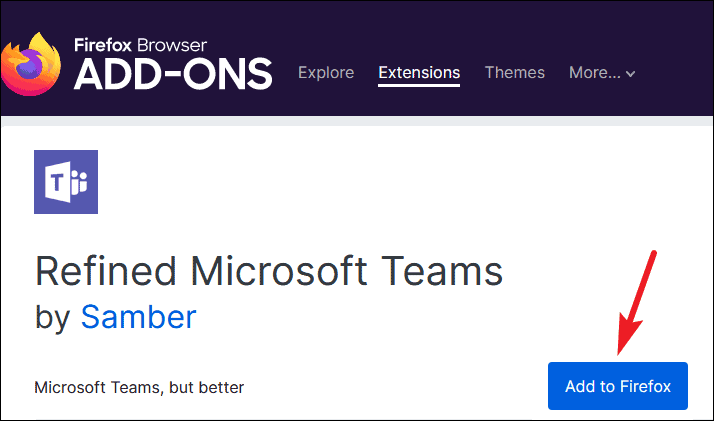
A confirmation prompt will appear. Click ‘Add’ to proceed.

The extension will be added. Go to teams.microsoft.com from Firefox. ‘Refined Microsoft Teams’ extension adds the option to bulk add users, guests as well as organization members when you are creating a new team. You can add up to 100 members in a single go with this extension. The feature to bulk add members automatically appears while you are creating a new team. Click the ‘Join or create a Team’ button and create a team from scratch.
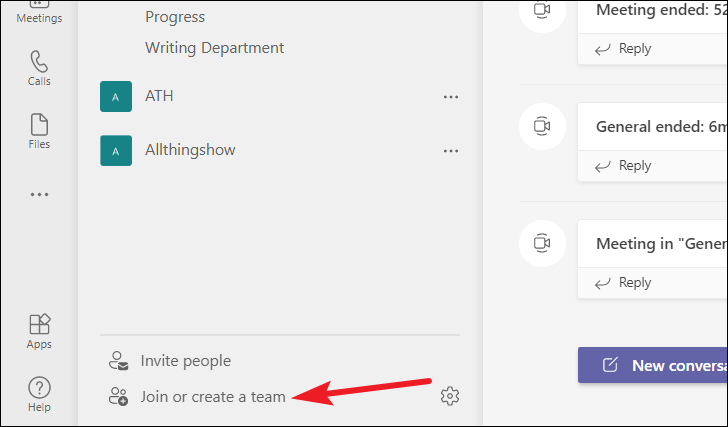
Then, enter the email addresses for people you want to add in the textbox above ‘Bulk import’ and separate each email address with a semi-colon (;). Instead of doing this manually, you can do it in Excel and copy the email addresses from there. Then, click the ‘Bulk import’ button.

Additionally, it also offers a highly innovative column view (up to 2 columns) to organize your team channels. If you have too many teams and channels, the column view organization can come in quite handy. Organizing the channels in 2 columns instead of a single long list will help you get a neater look for your teams.
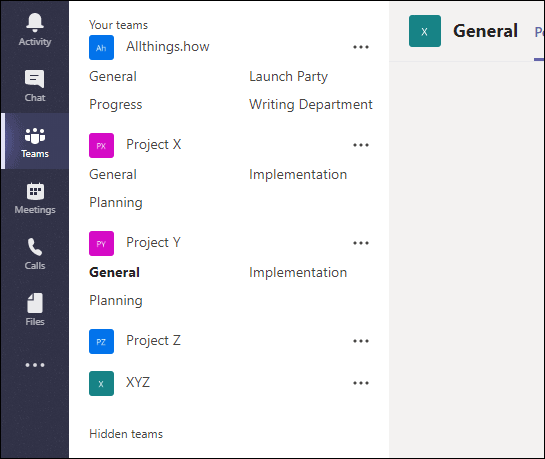
You can enable and disable the column view as per your requirement from the extension options.
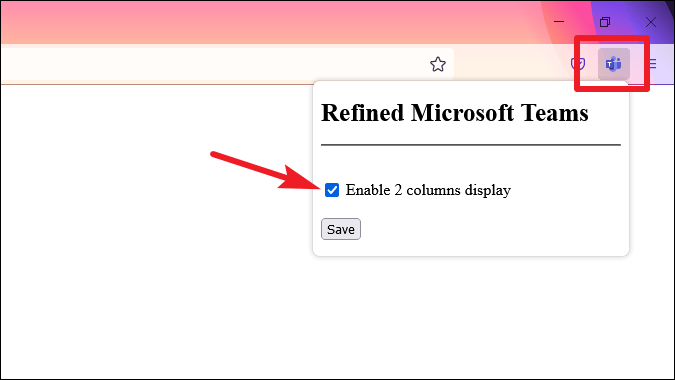
The ‘Refined Microsoft Teams’ extension is a must-have extension if you often create large teams for your organization. It is simple, yet efficient. Users can also use the extension to merge the “General” channel into the team name if there is no channel in the team, making your Teams space even more compact and neat.
Use PowerShell on Windows
If you’re a Microsoft Teams desktop user and use it on a Windows system, you’re in luck. With a little bit of scripting in PowerShell, you can bulk add members straight from your desktop without the need to install any web browser extensions. You need owner rights for the team you want to add the users to.
Note: To bulk add members to a new team you want to create, you’d first need to create the team in Microsoft Teams and then use PowerShell to add members.
Go to the search option in Windows and search for Windows PowerShell. Then, click ‘Run as Administrator’ to run PowerShell in the administrator mode. A User Account Control prompt will appear. Click ‘Yes’ to continue.
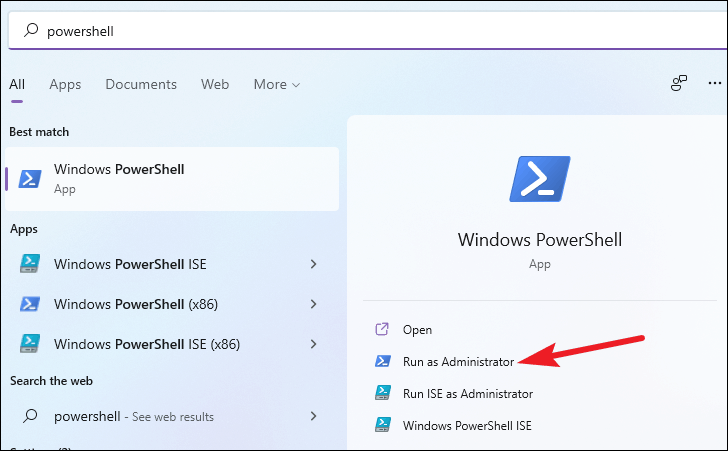
Once you run PowerShell, if you’ve never used it to run Teams commands before, you need to run the following command. This command installs the Microsoft Teams PowerShell modules which you need to run Teams-specific commands. Type or copy/ paste the following command as it is and press Enter.
Install-Module -Name MicrosoftTeams
Before the Microsoft Teams module is installed, you may have to permit to install certain providers or repositories. Read the message and type ‘A’/ ‘Y’ (depending on the message on the screen) to continue installing the module.

Once all the permissions are out of the way, the Microsoft Teams package will start installing.
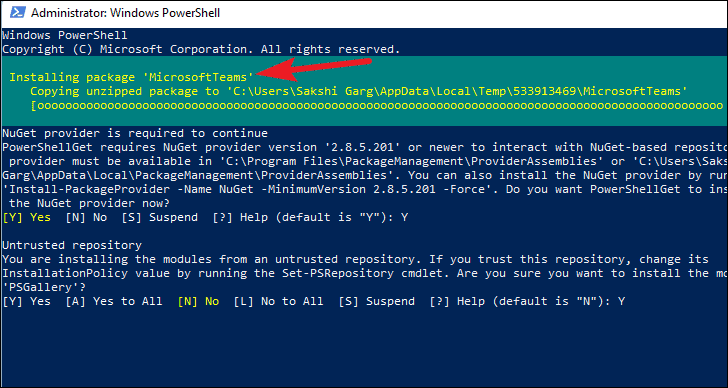
If it installs without any errors, there won’t be any confirmation message or anything. PowerShell will just be ready for the next command.
Now, you need to login into your Microsoft Teams account from PowerShell so it can run the commands we need. Run the following command in PowerShell.
Connect-MicrosoftTeamsA login prompt will appear. Enter your Microsoft Teams credentials to connect PowerShell with Teams. Even if your account has multi-factor authentication enabled, you’d be able to log in to PowerShell.

Once you’ve connected your Microsoft Teams account, you can get to the part about bulk adding members to your team. To do that, first, you need the ID for the Team you want to add members to. Run the following command to get Team ID.
Get-TeamPowerShell will display the list of all your teams with GroupId and some other details. You’ll need the GroupId for the team you want to add the members to. Copy the GroupId corresponding to the Team’s name you want.
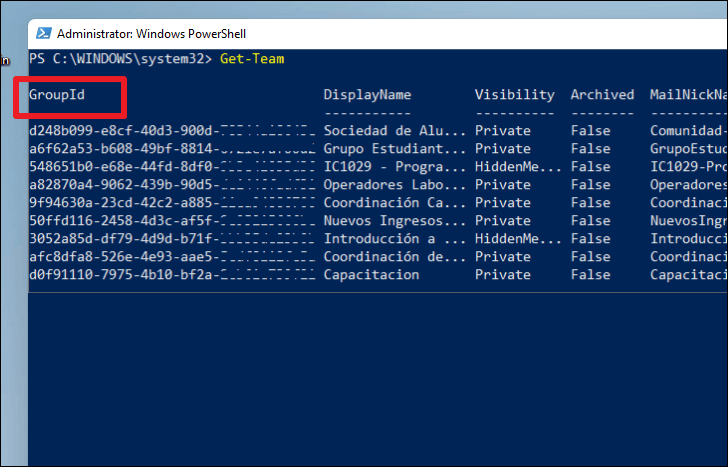
The next thing you need is a “*.csv” file with the email addresses of the users you want to add. It could be an Excel file, or it could be a Notepad file with the “*.csv” extension. If you want to use a notepad file, you’d need to enter the email addresses of the users one address per line. Before entering email addresses, enter ’email’ at the top to make it look like a column.
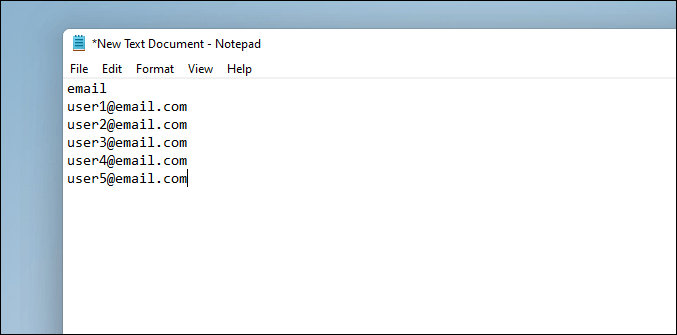
Then, save the file with the .csv extension. Enter .csv as the extension and select ‘All Files’ from the file type before saving.

Now, run the following command in PowerShell to import the email addresses from the .csv file and add them to a Team.
Import-Csv -Path "YOUR_FILE_PATH" | foreach{Add-TeamUser -GroupId YOUR_TEAM_ID -user $_.email}Replace the variable <YOUR_FILE_PATH> in the above command with the actual path for your .csv file but add the path in double-quotes. Also, replace the variable <YOUR_TEAM_ID> with the GroupId for the team you want to add the members to that we obtained above.
If the command runs without any errors, PowerShell won’t display any message. But you can go to Microsoft Teams and check that all the users will be added to the team.
Manually adding users one after another can be an exhausting task if you often have to create large teams but the users aren’t part of a security group in Microsoft from where you can import them. With the methods listed above, you can easily bulk add members to your teams no matter which system you’re on.





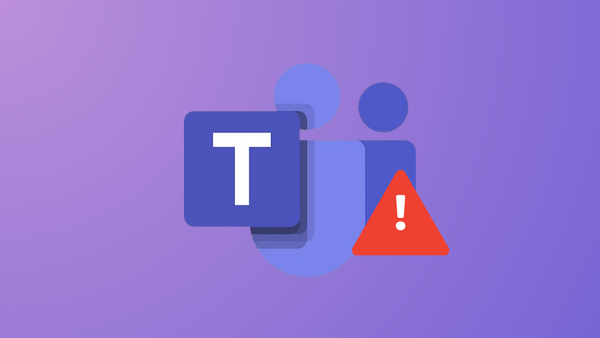




Member discussion